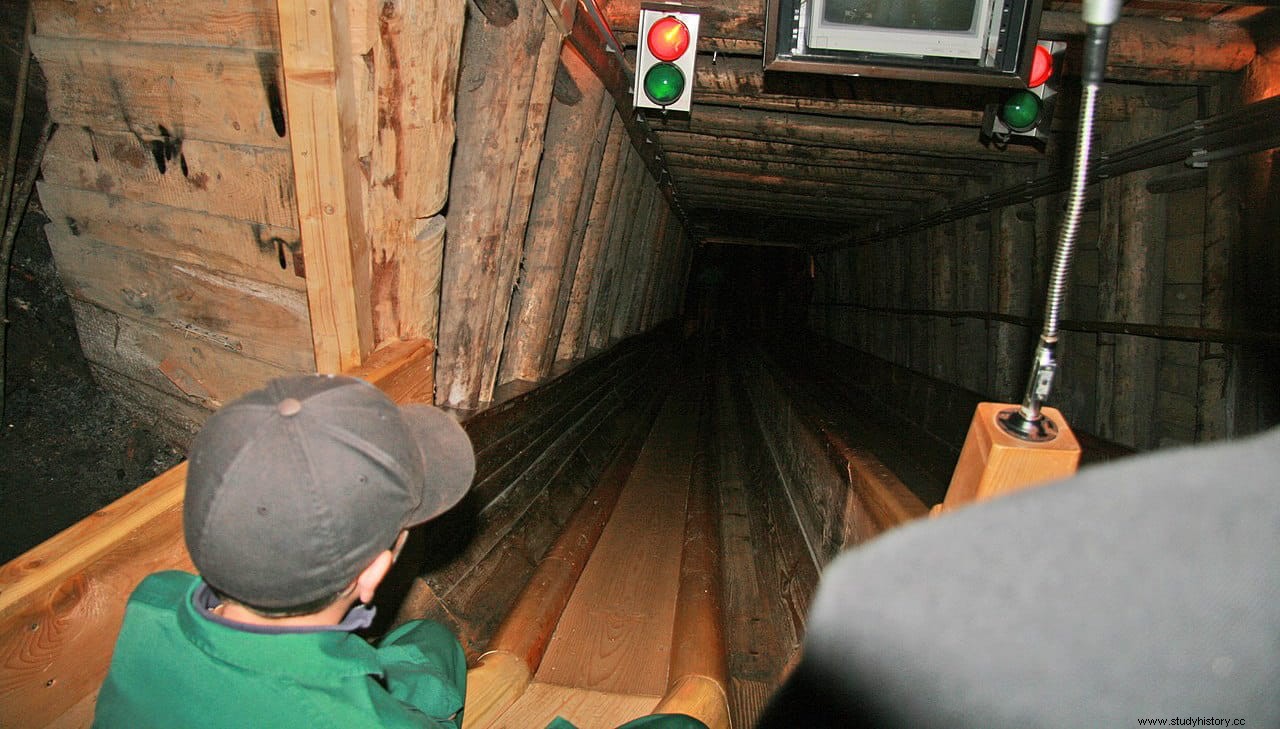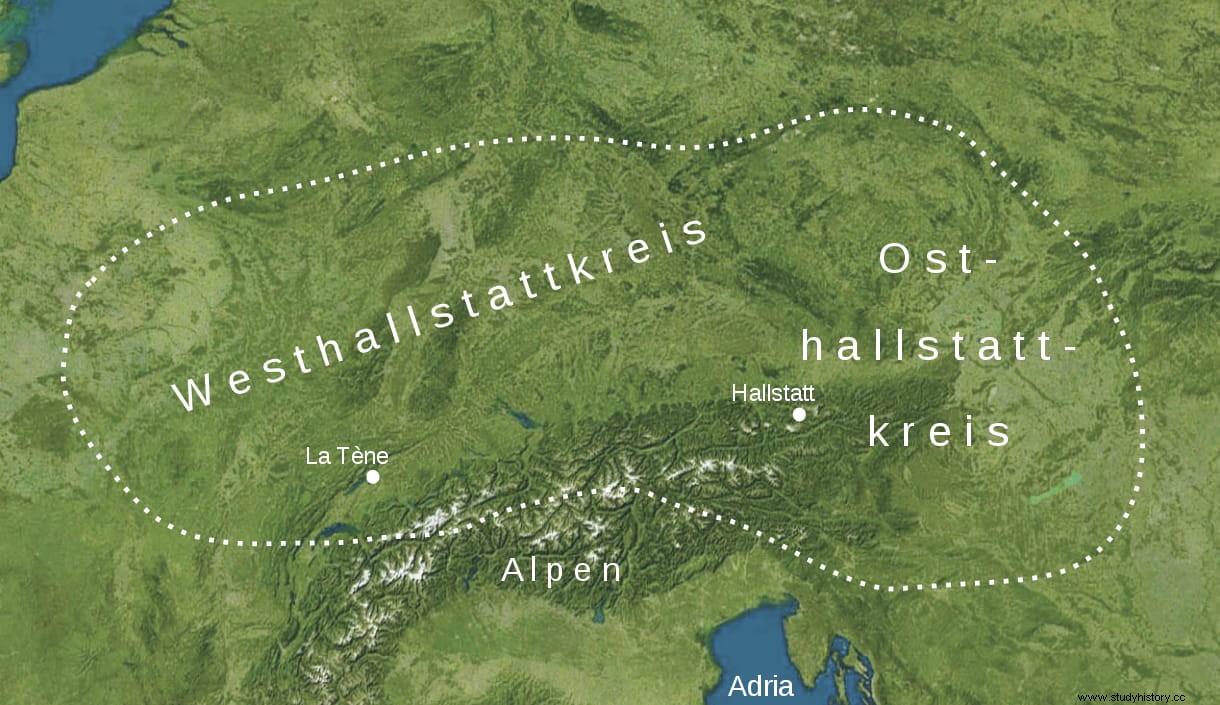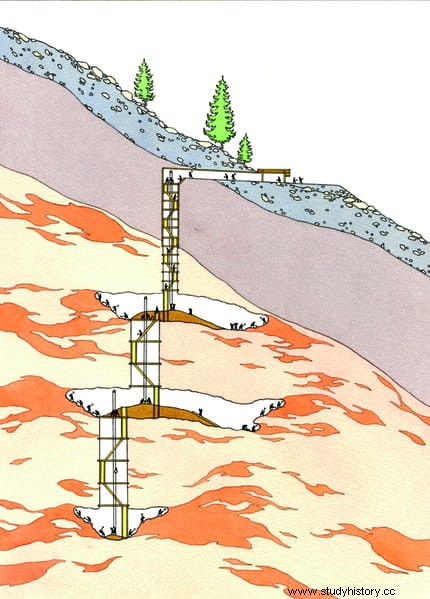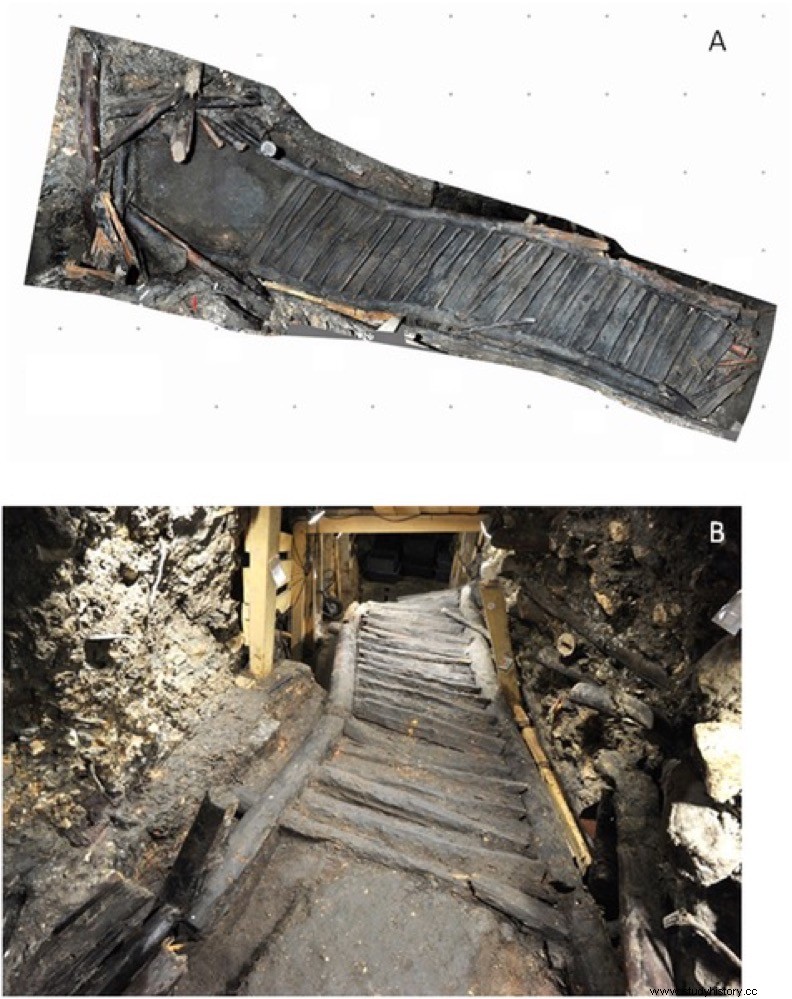One of the most important archaeological sites in the world is that of the Austrian town of Hallstatt, located on the shore of the lake of the same name and at the foot of Hoher Dachstein, the highest peak in the Salzkammergut Alps.
There, a salt mine was exploited since prehistoric times, which is considered to be the oldest in the world, its use being documented from around 1500 BC. although it is known that the exploitation began much earlier.
In 1846 Johann Georg Ramsauer found in Hallstatt a prehistoric necropolis with more than 2000 tombs belonging to the 8th-5th centuries BC

Earlier, in 1734, a mummy perfectly preserved by the surrounding salt was discovered inside the mine, possibly a worker who, around 1000 B.C. He perished buried by a landslide. As they did not know what to do with it, they buried it in the village cemetery, where unfortunately it rapidly deteriorated. Today you can see a reproduction in the mine museum.
Ramsauer excavated the necropolis during the second half of the 19th century, with the peculiarity that he did not find any poor tombs. . In all of them he found such a wealth of grave goods that he assumed the people of Hallstatt lived well above subsistence level . This also suggests that social classes did not exist, but that the great wealth provided by the mine was distributed practically equally in an equitable manner, something certainly unusual in the history of humanity.

From the abundant remains, objects and artifacts found in the necropolis (ceramics, iron and bronze swords, bracelets, needles, brooches, etc.) it was concluded that between 800 and 500 B.C. an advanced culture with a very characteristic style developed there, which later spread throughout Europe and is now known as the Hallstatt culture .
However, it has not been possible to find remains of the original settlement. It is supposed to be under the current locality, which occupies practically all the available space between the mountain and the shore of the lake. In fact, until 1890 when the road was built, Hallstatt could only be reached by boat or through narrow roads that did not allow the passage of vehicles.

Circa 400 B.C. the mountain collapsed, collapsing on top of the mine and burying it. It never again had the importance of past times, and during Antiquity and the Middle Ages there is hardly any news of Hallstatt. In 1595 the exploitation was reopened, and a log pipe was built to transport the brine to Ebensee, located 40 kilometers away. This pipeline is considered the oldest in the world and is still in use today.
The investigations carried out inside the mine reported an entire archaeological treasure, since the salt allowed the almost perfect conservation of organic materials. Food remains, tools (bronze picks, wooden maces, shovels), fabrics such as fur and wool coats, leather shoes, and even miners' backpacks have been found in it. The oldest find is a shoe dating from 5500 BC

Since the Neolithic, a total of 65 kilometers of galleries have been excavated, from which it is estimated that around 2 million cubic meters of salt were obtained. However, only 2 percent of the galleries have been explored so far (which, by the way, can be visited by sliding down a kind of slide, see the video at the end) since the investigations began in 1960.
One of the most impressive and best-preserved finds, according to experts, is a wooden staircase dating back to 1108 BC. It was used to save two floor levels in one of the galleries, for at least 100 years until a collapse that buried it in 1000 BC, and it was found in 2002 with its structure completely intact (thanks to the fact that the salt did not allow the growth of fungi that decompose wood).

It is 8 meters long by 1.20 meters wide and they say it is the oldest preserved wooden staircase in the world. After its discovery, the entire chamber where it was found was shuttered to protect it. But the continuous movements of earth in that area of the mine forced the ladder to be removed, which was dismantled step by step and taken to the Natural History Museum in Vienna for study. In 2015 it returned to the mine, where today it can be seen inside a large display case.
Hallstatt is today one of the main tourist attractions in Austria, both for the mine and for being considered one of the most beautiful towns in the world, as a result of its peculiar location. The investigations inside the mine continue, and possibly in the future they will bring us new surprises.
